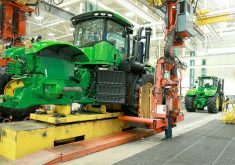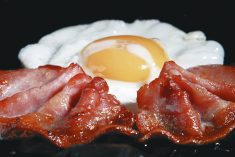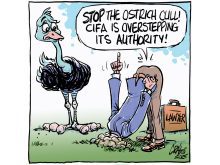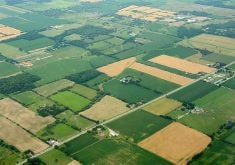Most cows calve at night. This is a survival tactic that dates back to the ancestral cow that hunkered down in a bush to deliver its calf safe from predators. Unfortunately, this schedule does not suit us. We would rather sleep when the sun goes down. Luckily, there is a way to entice cows to calve during the day.
Daytime calving is attractive for several reasons. The most obvious is that calving difficulties are easier to spot and manage during daylight when more manpower is available. On the pasture, predators are also less likely to strike during the day.
Read Also

Budget seen as fairly solid, but worrying cracks appear
The reaction from the agriculture industry to prime minister Mark Carney’s first budget handed down November 4th has been largely positive.
The easiest and most practical way of altering calving time is by changing the feeding schedule. Gus Konefal, a Hereford breeder from Manitoba, was one of the first to recommend feeding at night, after stumbling across this feeding system by accident. He was short of feed and had to haul it daily to his cattle, meaning his cattle weren’t fed until evening. He later realized that almost all his cows calved during the day.
He tested his theory by intentionally feeding late in the day to adjust calving times.
The Konefal method involves feeding twice a day, from 11 a.m. to noon and again at 9:30 to 10 in the evening, starting one month before calving starts. Using this method, 80 percent of cows calve between 7 a.m. and 7 p.m., compared to a little more than 38 percent that calve during the day when fed at 8 a.m. and 3 p.m.
The most convincing study involved 1,331 cows on 15 Iowa farms. By being fed once a day at dusk, 85 percent of calves were born between 6 a.m. and 6 pm. Whether the cows were started on night feeding one or three weeks before calving season made no difference in calving time.
For some producers, it is physically impossible to feed all their cattle at one time of day. A partial solution is to feed cows during the day and first- and second-calf heifers at dusk, which results in daylight calving for the groupof females that need the most observation.
Some producers handle this program by making feed available between 4 p.m. and 6 a.m., which prevents them from eating during daylight hours.
How does nighttime feeding change calving time? Though the exact cause is unknown, some think it is related to contractions in the rumen.
Researchers noticed that frequency of rumen contractions tends to fall a few hours before parturition. As well, the pressure generated by these contractions inside the rumen drops in the last two weeks before calving. The hypothesis is that evening feeding causes rumen contractions to occur, raising pressure in the rumen at night. During the day, the falling pressure is thought to stimulate hormonal changes that trigger calving.
The second stage of labour starts with the appearance of the water bag and ends with delivery of the calf. It is about 30 minutes long for mature cows and 60 minutes for first-calf heifers.
A heifer should be in this stage for at most one hour before lending a hand. If it is dark and the onset of the second stage is missed, the result could be prolonged calving and possibly loss of the calf.
This is the big advantage of daytime calving – it makes it easy to see when cows begin their labour.
Jeff Grognet is a veterinarian and writer practising in Qualicum Beach, B.C.














